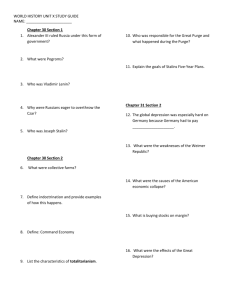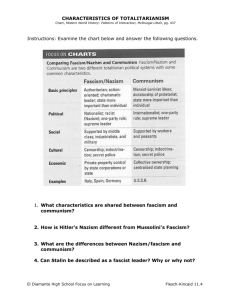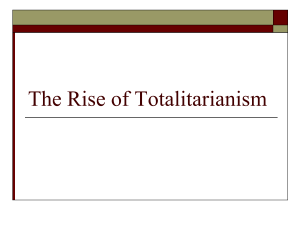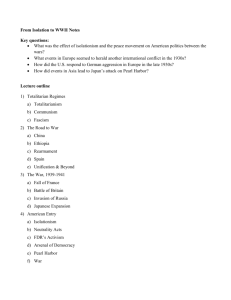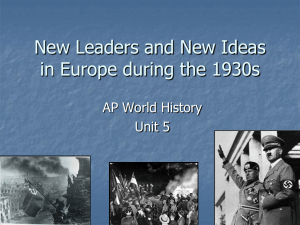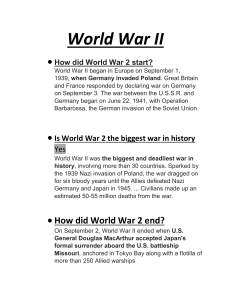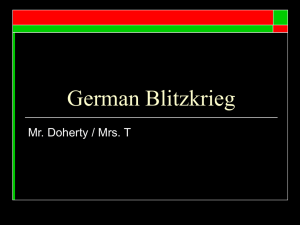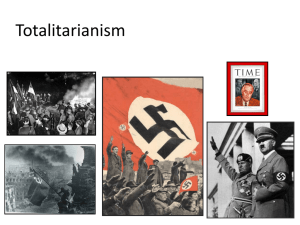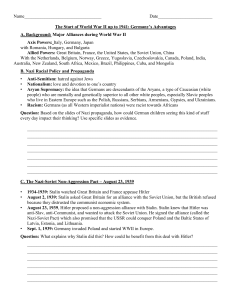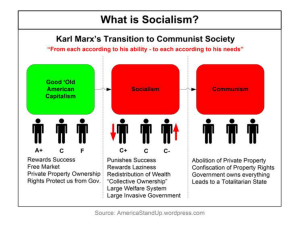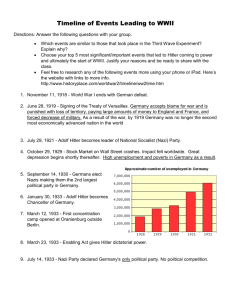File
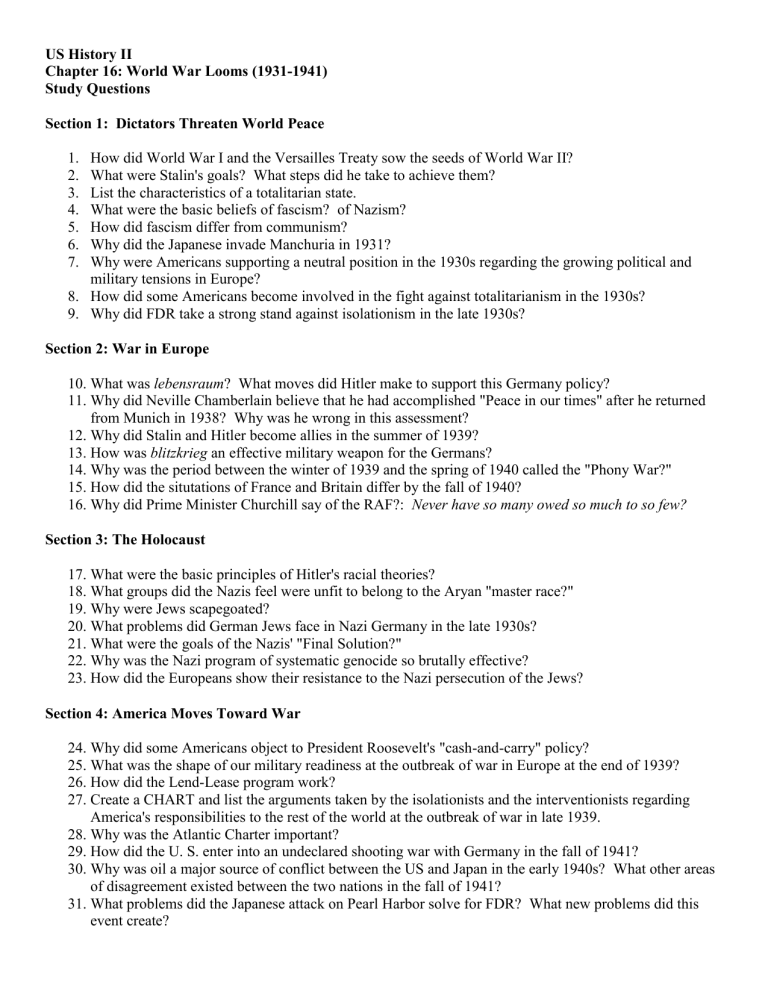
US History II
Chapter 16: World War Looms (1931-1941)
Study Questions
Section 1: Dictators Threaten World Peace
1.
How did World War I and the Versailles Treaty sow the seeds of World War II?
2.
What were Stalin's goals? What steps did he take to achieve them?
3.
List the characteristics of a totalitarian state.
4.
What were the basic beliefs of fascism? of Nazism?
5.
How did fascism differ from communism?
6.
Why did the Japanese invade Manchuria in 1931?
7.
Why were Americans supporting a neutral position in the 1930s regarding the growing political and military tensions in Europe?
8.
How did some Americans become involved in the fight against totalitarianism in the 1930s?
9.
Why did FDR take a strong stand against isolationism in the late 1930s?
Section 2: War in Europe
10.
What was lebensraum ? What moves did Hitler make to support this Germany policy?
11.
Why did Neville Chamberlain believe that he had accomplished "Peace in our times" after he returned from Munich in 1938? Why was he wrong in this assessment?
12.
Why did Stalin and Hitler become allies in the summer of 1939?
13.
How was blitzkrieg an effective military weapon for the Germans?
14.
Why was the period between the winter of 1939 and the spring of 1940 called the "Phony War?"
15.
How did the situtations of France and Britain differ by the fall of 1940?
16.
Why did Prime Minister Churchill say of the RAF?: Never have so many owed so much to so few?
Section 3: The Holocaust
17.
What were the basic principles of Hitler's racial theories?
18.
What groups did the Nazis feel were unfit to belong to the Aryan "master race?"
19.
Why were Jews scapegoated?
20.
What problems did German Jews face in Nazi Germany in the late 1930s?
21.
What were the goals of the Nazis' "Final Solution?"
22.
Why was the Nazi program of systematic genocide so brutally effective?
23.
How did the Europeans show their resistance to the Nazi persecution of the Jews?
Section 4: America Moves Toward War
24.
Why did some Americans object to President Roosevelt's "cash-and-carry" policy?
25.
What was the shape of our military readiness at the outbreak of war in Europe at the end of 1939?
26.
How did the Lend-Lease program work?
27.
Create a CHART and list the arguments taken by the isolationists and the interventionists regarding
America's responsibilities to the rest of the world at the outbreak of war in late 1939.
28.
Why was the Atlantic Charter important?
29.
How did the U. S. enter into an undeclared shooting war with Germany in the fall of 1941?
30.
Why was oil a major source of conflict between the US and Japan in the early 1940s? What other areas of disagreement existed between the two nations in the fall of 1941?
31.
What problems did the Japanese attack on Pearl Harbor solve for FDR? What new problems did this event create?
Chapter 16: World War Looms (1931-1941)
Identifications
Section 1: Dictators Threaten World Peace
1.
Nationalism *
2.
Totalitarianism *
3.
Fascism *
4.
“Black Shirts”
5.
Nazism *
6.
“Storm Troopers”
7.
Third Reich
8.
Francisco Franco
9.
Neutrality Acts
Section 2: War in Europe
1.
Edouard Daladier
2.
Neville Chamberlain
3.
Winston Churchill
4.
appeasement
5.
Luftwaffe
6.
blitzkrieg
7.
Maginot Line
8.
Charles de Gaulle
Section 3: The Holocaust
1.
Schutzstaffel
2.
Anti-Semitism
3.
Nuremberg Laws
4.
genocide
5.
crematorium
Section 4: America Moves Towards War
1.
Tripartite Pact
2.
Wendell Willkie
3.
Lend Lease Act
4.
Wolf Pack
5.
Hideki Tojo
6.
Hirohito
